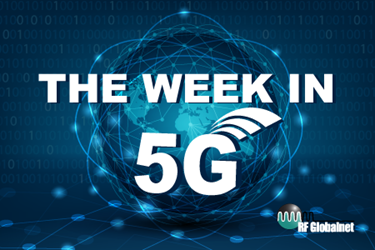The Week in 5G — 5G "Protective" Jewelry Actually Radioactive, Verizon Exceeds Own Expectations

By Abby Proch, former editor

Verizon has 14,000 reasons to celebrate the end of the year. It recently announced it has exceeded its own expectations, establishing more than 14,000 new 5G Ultra Wideband cell sites, according to a company press release. Verizon now provides 5G phone service to parts of 87 U.S. cities, 5G Home to parts of 65 cities, and 5G Business Internet to parts of 62 cities. Verizon’s speedy expansion on the C-Band will allow it to provide 100 million more customers with 5G Ultra Wideband service by the end of March 2022.
However, despite that progress, the debate over whether 5G deployment will, in fact, harm airplane navigation systems and disrupt thousands of commercial flights has stagnated. Representatives from each side of the argument are claiming their case, with officials from the likes of Boeing and Airbus asking for yet another delay and Verizon and AT&T saying there’s no time to waste. The crux of the argument is that airplane altimeters operate on a band much too close to that of 5G services. However, critics says that there is plenty of buffer space between the two and that the rest of the world has seen no interference to date. U.S. telecoms, like Verizon, are slated to begin 5G deployment Jan. 5, barring another delay.
And while some believe 5G interferes with airplane navigation, some also still believe that 5G operations are harmful to humans. So much so, that they’ve resorted to “protective” jewelry that’s ironically being banned in the Netherlands because of its radioactive properties. Dutch officials are issuing a warning to those who bought a “quantum pendant” or other “negative ion” jewelry claiming to ward off the supposed harmful effects of 5G. The Dutch Authority for Nuclear Safety and Radiation Protection (ANVS) has banned about 10 items, saying they emit low levels of radiation, according to a report by EuroNews.Next.
Back to spectrum allocation, Satcom providers are worried India is misguided in its consideration of selling 28 GHz band for 5G services, rather than reserving it and part of the mmWave spectrum for future satcom needs. According to a report by Telecom Talk, Viasat, a satellite communications provider, claims that the Indian economy could lose as much as $184.6 billion by 2030 if that part of the spectrum is allocated for 5G wireless service instead of satcom, like most countries.
In Spain, Ericsson and Vodafone have created a new 5G lab where more than 200 software companies plan to develop new applications for 5G, according to 5Gradar. Based in Madrid, the Vodafone 5G Lab will also offer myriad opportunities including workshops, challenges, and other events to spur innovation. Some offerings will also be available online to reach a wider audience.
Finally, while it seems in many ways that 5G is finally coming to fruition, it’s not all done and dusted. The FAA is still crossing its arms and harumphing over telecoms’ plans to roll out commercial 5G that they say will interfere with airplane altimeters. Huawei is still on the outside looking in when it comes to the U.S. ban on its components. Spectrum auctions intermittently performed better (Brazil) and worse (India) than expected, and critics still storm local government offices and meetings to decry (repeatedly unfounded) claims that 5G will give them one malady or another.
While there may never be a definitive pronouncement that 5G is done, deployed, and fully enjoyed by all, it is time for RF Globalnet to sunset “Week in 5G.” But in saying goodbye, we’re also saying hello to more coverage of the week’s latest innovations in the world of RF and microwave.
